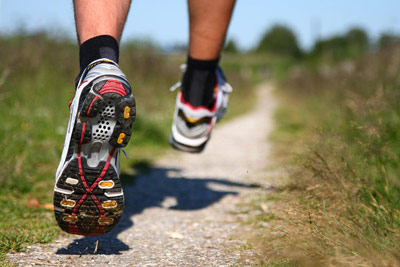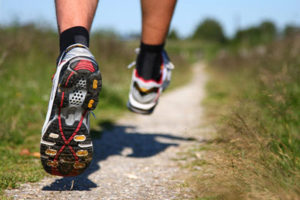
23 May Common Running Injuries
 Most running injuries are overuse injuries which are caused by either running too much or too soon. Most of the time with resting and icing the injury site will take care of the problem and runners can return to running in a few days or weeks. It is important that we do not self diagnose our injuries which could be symptoms of a more severe health condition. Consult a sport medicine doctor who will evaluate your injury and prescribe a proper course of treatment.
Most running injuries are overuse injuries which are caused by either running too much or too soon. Most of the time with resting and icing the injury site will take care of the problem and runners can return to running in a few days or weeks. It is important that we do not self diagnose our injuries which could be symptoms of a more severe health condition. Consult a sport medicine doctor who will evaluate your injury and prescribe a proper course of treatment.
Here is a list of the most common running injuries ranging from knee pain, upper leg injuries, lower leg injuries, foot, ankle and heel and hip injury. Each person reacts to the same type of shoes, running surface and other variables differently. Therefore, each is required a different course of treatment and the length of time for recovery will vary as well. When confronted with an injury, it is always better to take a conservative approach towards managing and treating it. After all, we would rather be not running for a few days than a few weeks, or even months.
Knee Pain
Runner’s Knee
Pain around and sometimes behind the knee cap. You knee moves up and down inside a nifty design in your thigh bone. When your legs are working efficiently, your knee moves inside this track smoothly. But when the knee cap moves out of its track or rubs against its sides, every step transforms into pain. Your thigh muscle holds your knee cap in place. When your thigh muscle is weak, it causes the knee cap to move out of place. Running tends to work on the muscle on the back of your legs (hamstring) rather than that in the front (quadriceps). Your hamstring is probably stronger than your quadriceps muscle and therefore results in an imbalance. Runner’s knee is sometimes aggravated by overuse. If you suspect runner’s knee is your problem, try taking a few days off and rest and ice the knee. You can use a commercially available ice pack or put a wet towel in the freezer and wrap it around your knee. If you choose to continue running, reduce your mileage and back off from hill work and speed work. Avoid running on banked surface which effectively has you running with a longer leg and puts additional stress on your knees. Try incorporating some grass or trail in your route since they absorb shocks better and thus reduce shocks to your knees. When you finish running, ice your knee immediately for 15 minutes to reduce the inflammation and lessen the pain. Continue icing for a few weeks after your pain has gone away. Stretching your quadriceps will help relax it and prevent your runner’s knee from returning. It is also advisable that you go see a podiatrist who can evaluate whether your foot is giving proper support to your knee. He may suggest orthotics or shoe insoles designed for athlete to correct the problem. The good news is that this is a highly treatable injury with some patience so don’t rush through the recovery process.
Illiotibial Band Syndrome (IT Band Syndrome)
Pain on the outside of the knee. This is primarily an overuse injury. The IT band is a band of tissue that starts from the outside of your hip all the way down to the outside of your knee. Overtraining can put stress on this band of tissue and shorten it. It then starts to rub against the outside of the knee and causes pain. This injury could take some time to heal ranging from days to months. Since overuse is the main culprit, it is a good idea to reduce your mileage. Ice the affected area frequently and immediately after your run. Try working on your hip by doing leg raises exercise and IT band stretch. Some runners can also benefit from some deep tissue massage.
Patellar tendonitis (pain below the knee)
This is an overuse injury that affects the tendon connecting your kneecap (patella) to your shin bone (tibia). The patellar tendon plays a pivotal role in the way you use your legs. It helps your muscles extend your lower leg so you can kick a ball, push the pedals on your bicycle and jump up in the air. Patellar tendonitis occurs when you place repeated stress on your patellar tendon, often when you suddenly increase the intensity or frequency of your workouts. Stress causes tiny tears in the tendon, which your body attempts to repair. But as the tears in the tendon become more numerous, your body can’t keep up, causing the inflammation in your tendon to worsen. Pain may be infrequent at first, but with continued stress and damage to the patellar tendon, the pain of patellar tendonitis can become a constant ache. Treating this injury could take some time. Icing the affected area is always helpful. You may find that you need to stop running. When you resume running, try using a knee strap that wraps around your leg just below the knee to redistribute force to the strap rather than to the knee. Weak thigh muscle also contributes to this injury. Try the quadriceps stretch to loosen this muscle.
Quadriceps tendonitis (pain above the knee)
This injury is similar to patellar tendonitis except that it affects the tendon connecting your kneecap (patella) to your thigh bone (femur). Generally, following the same treatment plan for patellar tendonitis in addition to rest and ice will usually help ease the pain.
Upper Leg Injuries
Hamstring pull
This is a stretching or tearing of the hamstring muscles, which are located at the back of your thigh. A hamstring injury occurs when muscle is torn due to injury or when it’s stretched too far. Hamstring injuries are common in such sports as running, water skiing and cheerleading. This injury could also be a result of overuse. You might have extending it too far or too much such as doing too much interval training or running downhill. The good news is that this is an easily treatable injury. In fact, you may find that you can continue to run. Ice the hamstring after each run and ease into your run slowly and take shorter steps. Try not to run on banked surface which effectively gives you one long leg and one short leg. Doing hamstring stretch will also help relax and loosen the hamstring as well.
Quadriceps pull
A strain to the quadriceps muscle will result in a dull ache while a tear will give you an intense pain. This is almost always as a result of the muscle imbalance between your hamstring and your quadriceps. Running tends to work the hamstring muscle and therefore overpower the quadriceps muscle. Fortunately, this is an injury that is rather easy to deal with. You may be able to continue running, just have to take it easy. Ice the affected area after each run and do the quadriceps stretchto help relax the muscle. Be careful to ease into the stretch and not force it.
Lower Leg Injuries
Shin splint
Anterior shin splint is pain in the front and outside of your leg. Posterior shin splint is pain in the front and inside of your leg. Shin splint is most likely caused by tight calf muscles. You may feel pain when you point your toes down. It is further aggravated by running on hard surface or not wearing shoes with sufficient cushion. You may need to cut back your mileage significantly or stop running all together for a few days. In the mean time, ice the shin a few times a day. If you have severe pain on your shin, it is a good idea to obtain an x-ray from your doctor. It will reveal whether you have a stress fracture on your shin bone (tibia). A stress fracture is a small tear in your tibia. This tear may be small, but it will force you to stop running for at least a few weeks until the bone starts to heal. This is a serious injury so go to your doctor immediately if you suspect you have a stress fracture. Doing calf stretches will help relax the muscle and reduce the risk of future injury of the shin.
Achilles tendonitis
Pain on the achilles tendon that connects the calf and the heel. The tendon is inflammed probably due to overuse, overtraining or to much hill work. Having tight calf muscle puts additional work on the tendon and stretches it too much. To relieve the pain, ice the area a few times a day but especially after running. Lifting your heel towards your calf will shorten the tendon and avoid stretching it too much. You could also try heel inserts inside your shoes to lift the heels. This injury will probably force you to stop running for at least a few days to a few weeks. During this time, try to avoid stretching the tendon. When you return to running, slowly return to your normal intensity and mileage and try not to run on soft surface to further sink in your heel. After running, gently stretch your calf and hamstring to relax these muscles to prevent future injury.
Foot, Ankle and Heel
Ankle sprain
This injury usually happens when you step into a hole or running on uneven surface. You twisted your ankle and pain is shooting up your ankle and lower leg. When this occurs, you should stop running immediately until the pain goes away and this may take a few minutes. When you resume running, start slowing and pay attention to see if any pain is still there. If it dissipated, then it is probably okay to continue your run. Otherwise, you should stop immediately. Regardless, it is always a good idea to ice the ankle to reduce any possible inflammation. If there is no swelling or pain the next day, you probably only had a mild sprain. If you notice swelling or have pain, there is a chance that you might have sprained your ankle, or worse yet, broken it.
Plantar fasciitis
This is sharp pain in the inside part of the bottom of your heel, which may feel like a knife sticking in the bottom of your foot. Heel pain tends to be worse with the first few steps after awakening, when climbing stairs or when standing on tiptoe, after long periods of standing or after getting up from a seated position. There are a number of possible causes for plantar fasciitis and they often work in combination. Tightness of the foot and calf, improper athletic training, stress on the arch or weakness of the foot are potential causes. Shoes that don’t fit, certain play or work actions or overuse (running too fast, too far, too soon) may hurt the plantar fascia. People with flat feet are at increased risk of developing plantar fasciitis. You may need to reduce your mileage so as to not further aggravating the pain. To give your arch some support, try arch taping. You can also try buying shoe insoles that provide arch support. Icing the affected area after each run will also help ease the pain. Make sure you stretch your calf before and after each run.
Heel spur
Heel spur has very similar symptoms as plantar fasciitis. However, pain in a heel spur injury is in the front of the heel and possible in the arch. Heel spur develops as an abnormal growth in the heel bone due to calcium deposits that form when the plantar fascia pulls away from the heel. This stretching of the plantar fascia is usually the result of over-pronation (flat feet), but people with unusually high arches can also develop heel spur. Women have a significantly higher incidence of heel spur due to the types of footwear often worn on a regular basis. You may ice the area after each run and try arch taping to give the arch some support. You can also try wearing heel pads in your shoes to give your heels some cushion. If pain persists, you should consult a podiatrist who can often treat heel spur effectively. Running with heel spur will only make it worse.
Hip and Back
Sciatica
The sciatic nerve is the longest nerve in the body. It runs from the pelvis through the buttock and hip area and down the back of each leg. It controls many of the muscles in the lower legs and provides feeling to your thighs, legs and feet. The term “sciatica” refers to pain that radiates along the path of this nerve — from your back into your buttock and leg. Sciatica isn’t a disorder in and of itself. Instead, it’s a symptom of another problem involving the nerve, such as a herniated disk. When the sciatic nerve is pinched, you could feel numbness all the way down the back of your leg. The pain can range from mild to severe. You usually can continue running if there is only mild pain and the pain will usually go away within a few weeks. If the pain is severe enough, you may need to stop running and consult a physician since sciatica could be symptom for more serious spine conditions.
Piriformis syndrome
The piriformis muscle is a small muscle in the groin that runs from the sacrum to the outer hip bone. If the piriformis muscle becomes tight or cramps it can put pressure on the sciatic nerve which passes underneath the piriformis muscle. Typically this pain increases when the muscle contracts, when sitting for an extended time, or direct pressure on the muscle. Pain in the buttock is also common. Piriformis syndrome is also a common cause of sciatica. Icing the affected area will help ease the pain. Try hamstring stretch and piriformis stretch to relax the muscle.
Pain on outside of the hip
The pain is usually at the hip joint. This is a basic overuse injury that is causing inflammation to the hip muscle or the fiber inside the joint. The cause of this injury varies from leg length discrepancy, running surface or an uneven pelvis. If the pain stays in the hip and is mild, you could try taking shorter strides, wearing more cushioned shoes or change your running surface to incorporate some softer surface. If the pain persists or gets worse, you should consult a doctor since it could indicate more serious lower back or spine conditions.




Sorry, the comment form is closed at this time.